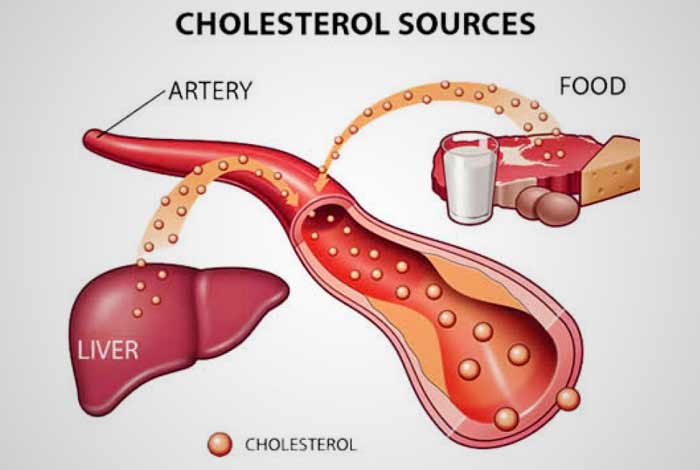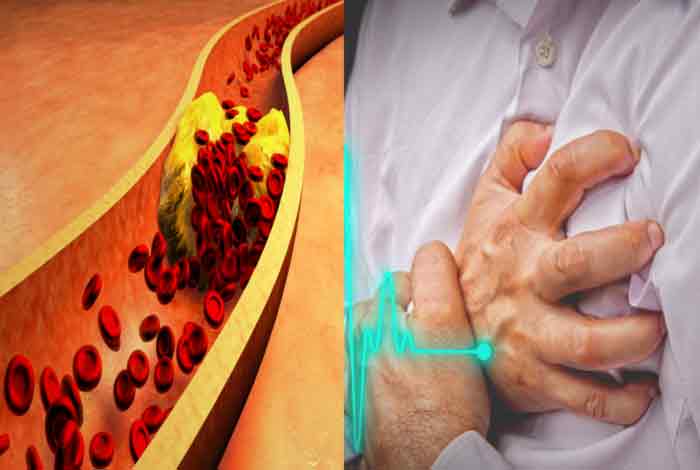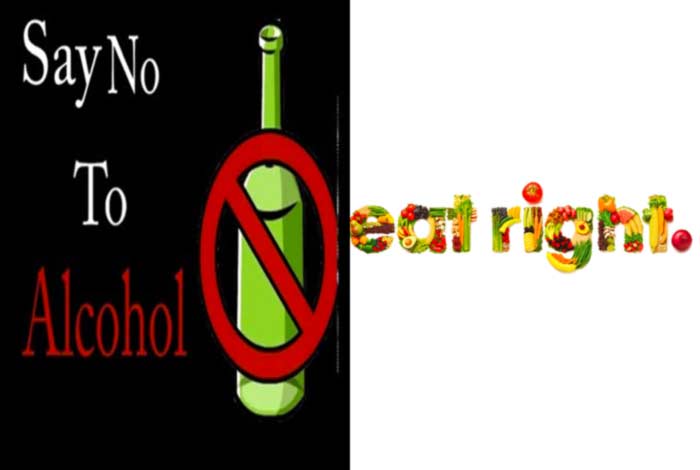
The Link Between Liver and Cholesterol Explained

Most of the cholesterol present in the body is synthesized in the liver and despite the popular belief about cholesterol, some of its forms are actually beneficial for the body. However, there are a few forms of cholesterol that are harmful for the body and liver.
Cholesterol is a fatty molecule that is synthesized in the liver and can also be obtained from some foods that we eat. It primarily has two types – high density lipid (HDL), which is the good cholesterol, and low density lipid(LDL), which builds up in the body and can result in a number of health problems.
Healthy Levels of Cholesterol
The level of cholesterol in the blood is measured in milligrams per deciliter (mg/dL) of blood. As per the Centers for Disease Control and Prevention (CDC), following are the healthy levels of cholesterol:
- LDL: < 100mg/dL
- HDL: >= 40 mg/dL
Function of HDL
HDL is involved in carrying the cholesterol in the body to the liver, where it is broken down and passed out of the body as waste. Since this function of HDL is beneficial for the body, HDL is referred to as good cholesterol.
Function of LDL
LDL carries cholesterol from liver to the cells, where it gets utilized. Sometimes, cholesterol can build up in the arteries and lead to a health condition, known as atherosclerosis.
This is the reason why LDL is sometimes referred to as bad cholesterol.
Effects of High Cholesterol Levels
When there is an increase in the levels of LDL in the body, the person is said to have high cholesterol, which can increase the risk of developing several serious health conditions. Cholesterol can build up in the arteries that are the major blood vessels of the body, carrying oxygen rich blood from heart to the cells of the body. When there is a buildup of cholesterol in the arteries, the blood flow gets restricted and therefore, the supply of oxygenated blood to the organs and tissues gets hindered. Narrowed blood vessels also increase the chances of developing blood clots.
If the arteries, supplying blood to the heart, become constricted, it can increase the chances of developing coronary heart disease (CHD), including angina, heart failure, coronary artery disorder and heart attacks. When the blood flow to the brain gets restricted, the chances of developing stroke increases.

Can Liver Disease be Responsible for High Cholesterol?
There are a number of liver diseases like hepatitis, alcohol-related fatty liver disease and non-alcoholic fatty liver disease (NAFLD), among others that cause extensive damage to the liver; thereby impairing its function.
One of the functions of liver cells is to breakdown cholesterol. When the entire functioning of the organ is hindered, this function also gets affected, causing cholesterol to build up in the body.
Impact of Cholesterol on the Liver
A cholesterol-rich diet can create a layer of fat around the liver, which can lead to NAFLD; eventually, causing damage to the liver in the long run. NAFLD is known to increase the risk of stroke, diabetes and other such serious health issues.
If the condition is detected early, it can be treated and stopped from getting worse. It is possible to decrease the level of fat in the liver if detected in the early stages.

How to Diagnose High Cholesterol Level?
The body displays no symptoms of high cholesterol level. It can be diagnosed with the help of blood test. This test is recommended to people, who have a family history of heart disease, diabetes or suffer from obesity.
Liver disease is diagnosed with the help of liver biopsy in which, a small piece of liver tissue is obtained and examined for abnormalities, or liver function test (LFT) – a blood test – performed to measure the levels of proteins and enzymes in the blood. The levels of proteins and enzymes go haywire when the liver gets damaged.

Treatment Options
In order to manage the high cholesterol levels, a person can make certain changes in his/her lifestyle and take medicines. Usually, the patients are encouraged to lower their cholesterol levels with the help of diet and exercise. If the person is overweight or obese, he will be advised to reduce his weight.
If these changes do not bear any results, then medicines can be prescribed to decrease cholesterol levels in the body. One of the commonly prescribed medicines falls in the class of statins, prescribed to the patient for life. These drugs work by blocking a chemical in the liver, which is responsible for synthesizing cholesterol in the same.
Treatment for liver disease depends on the type of the disease. Lifestyle modifications, medicines and some other changes are suggested to the patient. If no results are obtained, then liver transplant might be suggested.
Diet
A healthy diet might help decrease the risk of developing liver disease and even reduce its impact. It is important to maintain a healthy weight for being overall healthy. Depending on the type of liver disease, the patient’s diet and exercise will be determined.
1. Alcohol
A patient having alcohol-related liver disease will be advised to limit or completely stop the intake of alcohol. Protein- and carbohydrate-rich diet is recommended to maintain healthy weight.
2. Foods to Avoid and Eat
Decreasing the consumption of fatty foods can help reduce the impact of fatty liver or NAFLD. Consuming healthy portions of fruits and vegetables as well as foods like bread and potatoes that slowly release energy can help.
By consuming a diet rich in protein, a patient can meet his/her energy requirements without taking in higher quantities of carbohydrates. Nuts, eggs, pulses and chicken breast are excellent sources of protein and can be included in the diet.
Having meals after regular intervals and light snacks in between proves to be a healthy way for getting enough fuel for the day.
Prevention from High Cholesterol
A patient can successfully decrease his/her chances of developing diseases by cutting down on foods that are rich in fat as this will ultimately decrease the levels of LDL in the blood.
A healthy diet with large portions of fruits and vegetables can be consumed in order to lower the cholesterol levels. Saturated fats are a rich source of cholesterol in the body and therefore, foods containing the same like fast foods, sausages, cakes, full-fat cheese, butter and cream should be avoided.
Regular exercise should be made a part of the daily routine and used for lowering the levels of cholesterol in the body. Smoking and excessive consumption of alcohol should be stopped.

Conclusion
By making changes in the diet and exercising regularly, a person can successfully manage high cholesterol levels in his/her blood. These changes are to be made for the lifetime to prevent cholesterol levels to increase in the later phases of life. The liver is a self-healing organ and therefore, it is possible to reverse the damage done to it up to a certain extent if discovered in the early stages.
Losing weight if required, consuming a healthy diet, exercising regularly, and cutting down on alcohol and smoking can help decrease the impact of liver disease on the body.











